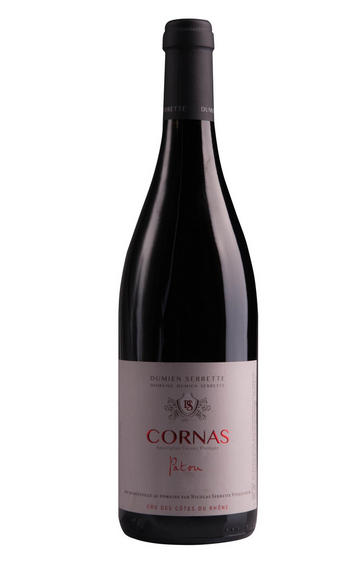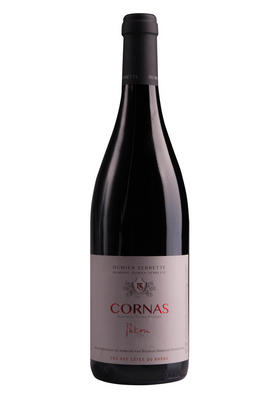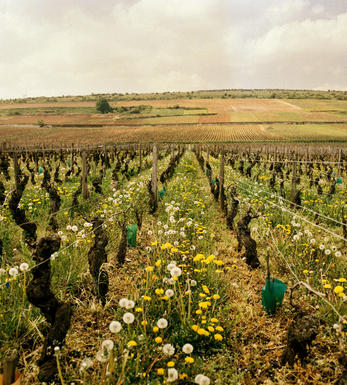
2011 Cornas, Patou, Domaine Dumien Serrette, Rhône

Critics reviews
Robert M. Parker, Jr. - 27/12/2012
About this WINE

Domaine Dumien-Serrette
Located in the Cornas appellation, Domaine Dumien-Serrette is almost a caricature, in the best possible sense, of course, of an old-school small scale Rhône Domaine. The Cave is tiny and chaotic, located in the lee of Cornas’ exceptionally large church spire.
Gilbert Serrette is small, tanned in most seasons and perennially energetic; he insists that the barrel tasting involves several different foudres, of differing ages, but fundamentally all containing partially destemmed Syrah from the 1.8 metre squared lieu-dit of Patou. Foot crushing and a manual press underline the traditional inclination of this fourth generation estate, but the attention to detail in the vineyard and care with yields and fining are all modern enough.
Their wines, accordingly, do not want for the granitic splendour for which this appellation is known, nor the indulgent cassis-cum-sauvage mid-palate flavours, so typical of fine Cornas, but they also have a beguiling floral elegance which sets them apart from more prosaic peers.
Simon Field MW, BBR Buyer

Cornas
Cornas is a small appellation, just 150 hectares, located south of St Joseph. It’s on the west side of the river. The name “Cornas” comes from an old Celtic dialect term, meaning “burnt land”, so it’s no surprise that on the steep terraces here, facing south, temperatures are significantly higher than those in Hermitage, which is just 7km away.
The granite soils are home to the Syrah grape, producing reds that sit somewhere between those of Hermitage and Côte-Rôtie. These are strong and powerful wines, with nervy acidity and a robust, rustic charm to them. Their prominent tannins mean that they often demand time in the cellar to express their underlying elegance and complexity.

Syrah/Shiraz
A noble black grape variety grown particularly in the Northern Rhône where it produces the great red wines of Hermitage, Cote Rôtie and Cornas, and in Australia where it produces wines of startling depth and intensity. Reasonably low yields are a crucial factor for quality as is picking at optimum ripeness. Its heartland, Hermitage and Côte Rôtie, consists of 270 hectares of steeply terraced vineyards producing wines that brim with pepper, spices, tar and black treacle when young. After 5-10 years they become smooth and velvety with pronounced fruit characteristics of damsons, raspberries, blackcurrants and loganberries.
It is now grown extensively in the Southern Rhône where it is blended with Grenache and Mourvèdre to produce the great red wines of Châteauneuf du Pape and Gigondas amongst others. Its spiritual home in Australia is the Barossa Valley, where there are plantings dating as far back as 1860. Australian Shiraz tends to be sweeter than its Northern Rhône counterpart and the best examples are redolent of new leather, dark chocolate, liquorice, and prunes and display a blackcurrant lusciousness.
South African producers such as Eben Sadie are now producing world- class Shiraz wines that represent astonishing value for money.


Buying options
Add to wishlist
Description
The Patou vineyards have yielded a ripe and warmly textured wine, with notes of cassis, eucalypt and mocha evidenced. Slight high-toned, the core of the wine is plump and reassuring.
Simon Field MW, BBR Buyer
Located in the shadows of the spire of the village’s impressive church, Domaine Dumien-Serrette is unassuming and understated, unlike the wines of course, which glory in ripeness and fruit. Gilbert Serrette blends from barrique and larger vats, filled at this stage with the fruits that are distinguished only by whether or not their vines were located en coteau or en demi-coteau. He cites 2011 as an easier and less rustic vintage than 2010; the chronology and tempo of its evolution set in train by a rapid harvest on 14th and 15th September.
wine at a glance
Delivery and quality guarantee